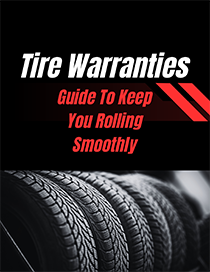Fall Tire Care: Preparing Your Vehicle for Cooler Weather
As the crisp autumn air begins to replace the heat of summer, it’s a great time to give your tires some attention before the winter months arrive. Fall tire care is essential for ensuring your vehicle handles safely and efficiently as the weather changes. From cooler temperatures to potential wet and icy conditions, here’s everything you need to know to prepare your tires for the fall season.
1. Check Tire Pressure Regularly
As the temperature drops, so does tire pressure. For every 10°F decrease in temperature, tire pressure can drop by 1-2 psi. Low tire pressure can lead to poor fuel efficiency, uneven tire wear, and, more importantly, a decrease in your vehicle’s handling and safety. Be sure to check tire pressure at least once a month during fall, especially when the weather changes. You can find the recommended tire pressure for your vehicle on the driver’s side door jamb or in your owner’s manual.
2. Inspect for Wear and Tear
Before the cold weather sets in, it’s crucial to inspect your tires for signs of wear. Look for uneven tread wear, cuts, bulges, or any punctures. Use the “penny test” to check the tread depth: Insert a penny into the tread with Lincoln’s head facing down. If you can see the top of Lincoln’s head, it’s time to replace your tires. The National Highway Traffic Safety Administration (NHTSA) recommends replacing tires with a tread depth of 2/32 inch or less.
3. Consider Seasonal Tire Swaps
If you live in an area with harsh winters, switching to winter tires during fall might be a wise choice. Winter tires are designed to offer better traction, handling, and stopping power on cold, wet, and icy roads. While fall doesn’t always bring snow, it can bring rain and cold temperatures that can affect your tires’ grip. If you live in a region that doesn’t see heavy snow but still experiences chilly weather, all-season tires might also be a good option.
4. Examine Alignment and Balance
If your vehicle pulls to one side, or if you notice vibrations when driving, it may be time to have your tire alignment and balancing checked. Misaligned wheels and unbalanced tires not only cause uneven tire wear but can also reduce your vehicle’s handling and safety. Fall is the perfect time to have a mechanic inspect and correct any alignment or balance issues before they become bigger problems during winter.
5. Prepare for Wet and Slippery Conditions
Fall often brings rain, fog, and wet roads, which can reduce tire traction. Make sure your tires are in good condition to handle these slippery conditions. If your tires are near the end of their lifespan, they may not provide the necessary grip on wet surfaces. Tires with deeper treads perform better at channeling water away from the tire, reducing the risk of hydroplaning.
6. Don’t Forget Your Spare
It’s easy to forget about your spare tire, but it’s essential to make sure it’s in good condition, especially as you head into fall and winter. Check that your spare tire is properly inflated and not damaged. Also, if you’re using a full-size spare, be sure to rotate it regularly to ensure even wear across all your tires.







